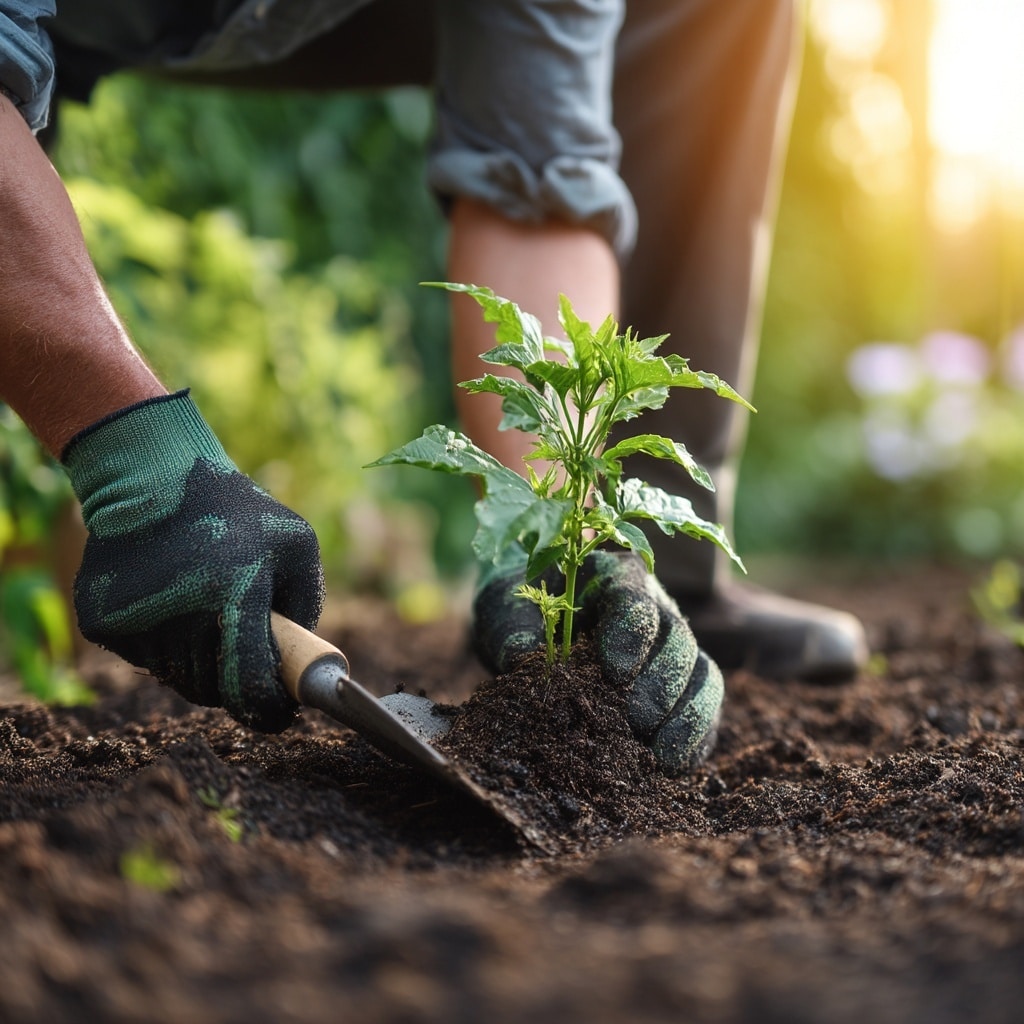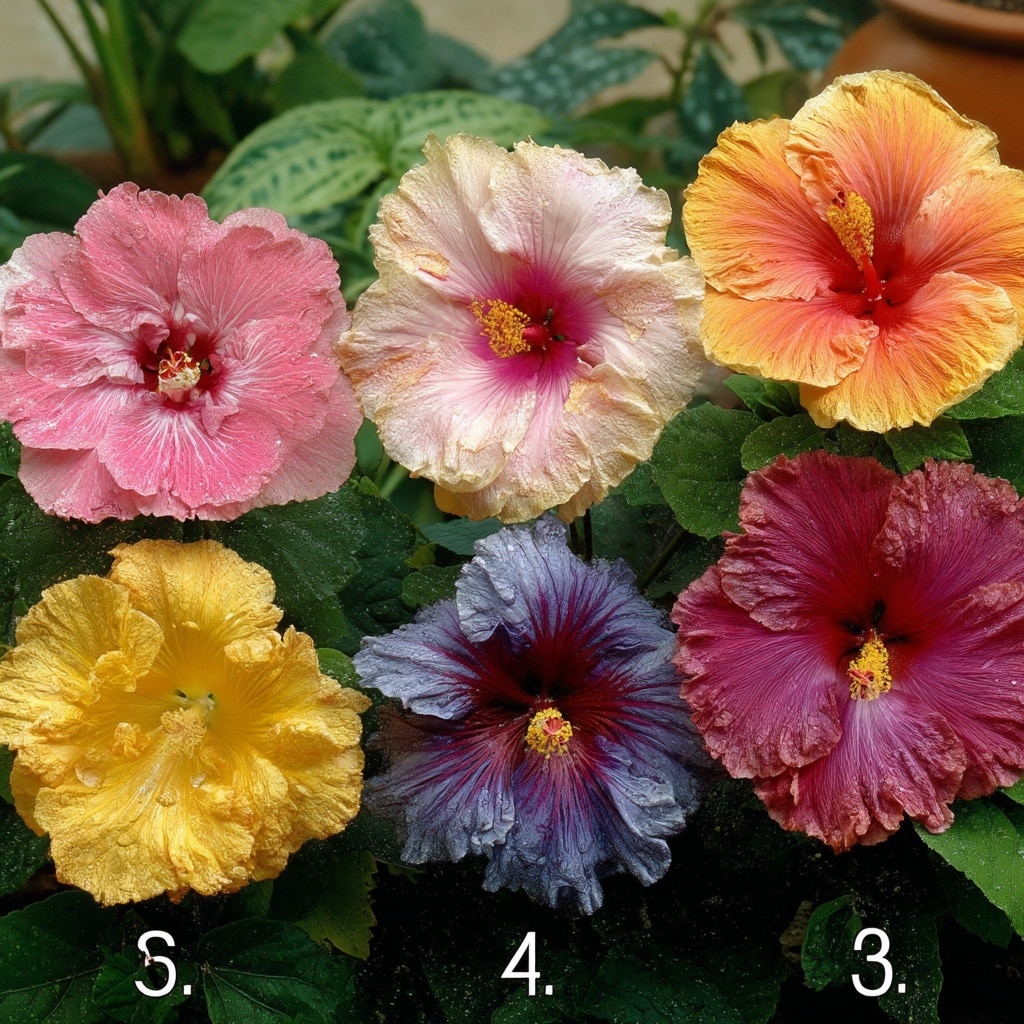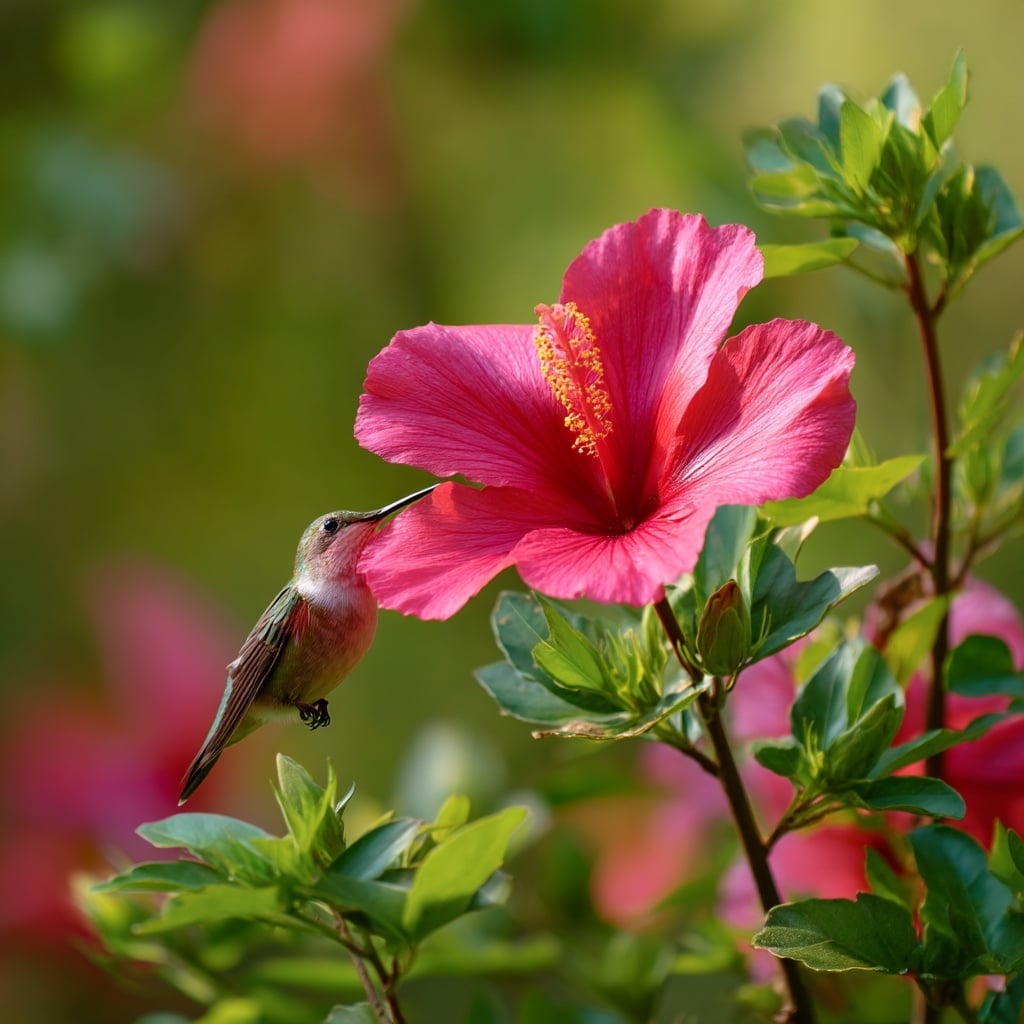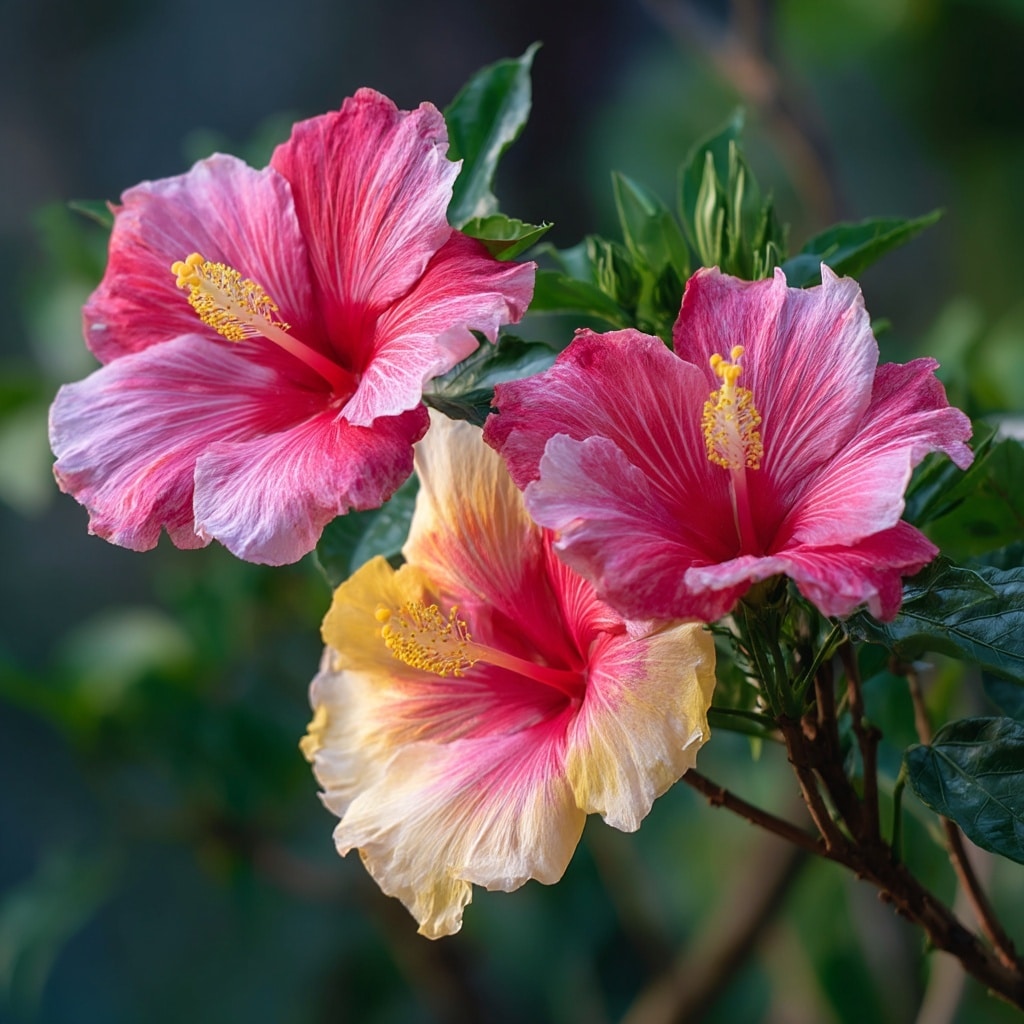Hibiscus is a show-stopping perennial that brings a tropical flair to temperate gardens, boasting dinner-plate-sized blooms in shades of red, pink, and white. While its dramatic appearance might suggest it’s high-maintenance, perennial hibiscus is surprisingly easy to grow with the right conditions. These hardy plants attract pollinators like butterflies and hummingbirds, making them a favorite for gardeners looking to add both beauty and biodiversity to their landscapes. Whether you’re planting a single specimen as a bold focal point or filling a border with color, hibiscus can thrive year after year with a little thoughtful care. In this guide, we’ll walk through the essential steps to planting, growing, and maintaining perennial hibiscus for a vibrant garden that blooms late into the season.
Table of Contents
About Hibiscus: Types and Growth Habits
Perennial hibiscus belongs to a diverse plant family with more than 300 species, but in the garden, three main types stand out: Hibiscus moscheutos (rose mallow), Hibiscus coccineus (scarlet swamp hibiscus), and Hibiscus syriacus (commonly known as rose of Sharon). These varieties are cold-hardy, come back year after year, and are known for their massive, saucer-shaped flowers that can span 10 to 12 inches in diameter.
Depending on the cultivar, perennial hibiscus can reach heights of 2 to 8 feet and spread just as wide. Dwarf varieties stay more compact, making them ideal for smaller garden spaces or containers. While the flowers resemble something you’d see in the tropics, these plants are well-suited to USDA zones 4 through 9.
They are part of the mallow family, related to hollyhocks, and bloom later in the summer when many other flowers have faded. This late-season color makes hibiscus a valuable addition to any pollinator-friendly garden.
When and How to Plant Hibiscus

When to Plant Hibiscus
The best time to plant perennial hibiscus is in the spring, after the danger of frost has passed and the soil has warmed. Starting with young nursery plants is the easiest method, but you can also grow hibiscus from seed or root cuttings. If starting from seed, begin indoors about 12 weeks before your last expected frost date. Soaking the seeds in warm water for an hour before planting helps speed up germination. Outdoor sowing is also possible, but wait until the soil is consistently warm.
Choosing the Right Location
Hibiscus thrives in full sun—at least six hours of direct light daily. While it will tolerate partial shade, less sunlight often results in fewer blooms. Select a spot with well-drained soil that’s rich in organic matter and has a pH that ranges from neutral to slightly acidic. Avoid areas exposed to strong winds, which can damage the plant’s tall, brittle stems.
Planting Tips
- Spacing: Plant hibiscus 2 to 3 feet apart to allow room for growth and airflow.
- Depth: Set nursery plants so the top of the root ball is level with the soil surface.
- Cuttings: Take a 5–6 inch stem cutting in spring, strip off the lower leaves, and plant it in a mix of three parts sand to one part peat moss. Keep the medium moist, and roots should form in a few weeks.
- Watering: After planting, water thoroughly to help the roots establish. Consistent moisture is key during the first growing season.
Taking the time to plant your hibiscus properly sets the stage for years of stunning blooms and healthy growth.
Caring for Perennial Hibiscus

Perennial hibiscus is relatively low-maintenance once established, but a consistent care routine helps promote lush growth and repeat blooming throughout the summer.
Watering Needs
Hibiscus plants love moisture. They’re not drought-tolerant, especially when young or during hot spells. Water deeply and regularly to keep the soil consistently damp but not soggy. Mulching around the base with 2 to 3 inches of organic mulch—like shredded bark or leaf mold—helps retain moisture and keeps roots cooler during hot weather.
Fertilizing Tips
For the best flower performance, feed your hibiscus in early spring with a balanced fertilizer (such as 10-10-10). As the season progresses, switch to a fertilizer that’s high in potassium, moderate in nitrogen, and low in phosphorus. Avoid high-phosphorus formulas (like many “bloom boosters”)—hibiscus can be sensitive and may suffer from yellowing leaves or poor blooms if overfed.
Pruning and Deadheading
- In early spring, prune any dead stems back to the ground to encourage strong new growth.
- Perennial hibiscus blooms on new wood, so spring pruning won’t interfere with flowering.
- To encourage continuous blooming, remove spent flowers before they go to seed.
- You can also cut plants back by one-third after a heavy flush of blooms to stimulate new buds.
Overwintering and Protection
In colder zones, hibiscus dies back to the ground in winter. Don’t worry—it’s normal. Just cut down dead stalks and apply a thick mulch layer to protect the root system from deep freezes. Avoid fertilizing late in the season to prevent tender new growth that won’t survive winter.
With the right care, your hibiscus will return stronger and bloom more vibrantly each year.
Popular Hibiscus Varieties for the Home Garden

Choosing the right type of hibiscus can elevate your garden with bold colors, dramatic blooms, and striking foliage. While all perennial hibiscus varieties are showy, some stand out for their size, color, and growth habits. Here are a few garden favorites worth considering:
1. Rose Mallow (Hibiscus moscheutos)
Known for its enormous, plate-sized flowers—often reaching 10 to 12 inches in diameter—rose mallow is a classic perennial hibiscus. It grows quickly and puts on a spectacular show from late summer into early fall.
Popular cultivars include:
- ‘Anne Arundel’ – Bright pink blooms up to 9 inches wide on 5-foot-tall plants.
- ‘Kopper King’ – White to light pink petals with a burgundy eye and deeply cut, coppery-red foliage.
- ‘Lady Baltimore’ – Pink petals with a bold red center, ideal for cottage gardens.
- ‘Lord Baltimore’ – Vivid red blooms with a tropical look on sturdy 5-foot-tall stems.
2. Scarlet Swamp Hibiscus (Hibiscus coccineus)
Also known as Texas Star, this variety features slender, star-shaped red flowers and grows up to 7 feet tall in one season. It thrives in wet soil conditions and dies back completely in winter, only to return robustly each spring.
3. Rose of Sharon (Hibiscus syriacus)
Though technically a woody shrub, rose of Sharon behaves like a perennial in many climates. It blooms prolifically from midsummer into fall and is available in a wide range of colors including white, lavender, blue, and pink.
Each of these hibiscus types brings unique beauty to the garden, and many gardeners mix and match varieties for a more diverse display of colors and bloom times.
Common Pests and Problems with Hibiscus

Even though hibiscus is generally resilient, it can face a few common pest and disease issues that are best addressed early to keep your plants healthy and blooming.
Pest Troubles
- Aphids – These tiny insects cluster on new growth and flower buds, sucking plant juices and causing distortion. They can be managed with insecticidal soap or a strong spray of water.
- Whiteflies – Found mostly on the undersides of leaves, these tiny white insects can cause yellowing and leaf drop. Yellow sticky traps or neem oil can help control infestations.
- Japanese Beetles – These metallic pests chew holes in foliage and flowers. Handpick them early in the morning or use traps set away from your hibiscus beds.
Disease Risks
- Fungal Leaf Spots – Often caused by wet foliage and poor air circulation. Remove affected leaves and avoid overhead watering.
- Blight or Rot – May occur when mulch touches the stems or the soil remains too wet. Always keep mulch an inch or two away from the base of the plant and ensure good drainage.
Preventative Tips
- Clean up dead plant material in fall to reduce overwintering pests and pathogens.
- Space plants properly to ensure airflow.
- Inspect regularly during the growing season so you can act before problems spread.
By staying vigilant, most hibiscus issues can be managed easily without chemicals, making them safe for pollinators and pets alike.
Final Thoughts and Fun Facts About Hibiscus

Growing perennial hibiscus is one of the most rewarding ways to add vibrant, tropical flair to your garden—without needing a tropical climate. With the right care and attention, these hardy plants will reward you with towering stems and massive, colorful blooms that return year after year.
Besides their stunning looks, hibiscus plants play a role in garden ecosystems by attracting hummingbirds, bees, and butterflies. Plus, they offer a rich cultural history: in Victorian times, gifting a hibiscus bloom symbolized admiration for someone’s delicate beauty. The yellow hibiscus is even the official state flower of Hawaii.
So whether you’re planting a few bold varieties along your fence line or mixing them into a perennial border, hibiscus adds unmatched beauty and drama to your landscape.





